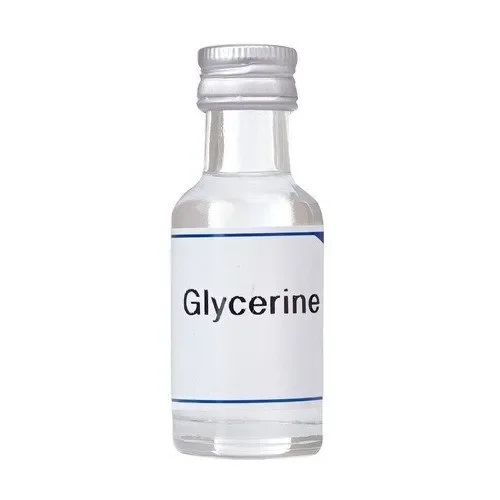What are plasticizers, and how do they affect softgels?
Plasticizers are the unsung heroes of softgel formulations. While gelatin provides the structural backbone, plasticizers are what transform a rigid protein matrix into the flexible, robust capsules. Understanding their role is crucial; a poorly chosen plasticizer system can be disastrous for product stability, while the right combination unlocks formulation possibilities that hard capsules simply cannot match.
This article explores the essential role of plasticizers in softgel development, examining their types, characteristics, and the critical factors that influence their selection. We'll dive into common formulation challenges and provide insights into how plasticizer choice affects everything from shell properties to long-term stability.
Why softgels need plasticizers
To understand plasticizers, we must first grasp a fundamental challenge in softgel manufacturing. Pure gelatin becomes rigid at room temperature, making it unsuitable for flexible capsule shells. Water initially acts as a plasticizer during processing, but as it evaporates, the gelatin network becomes brittle and prone to cracking.
The main purpose of the plasticizers, including water, within the capsule shell is to decrease the glass transition temperature of gelatin from 217°C (dried, amorphous gelatin) to approximately 40°C, depending on the formulation, in some cases even lower. When the capsule shell is exposed to temperatures below its specific glass transition temperature, it effectively starts flowing: this is visible as stickiness, softening, and deformations.
This is why it is essential to use non-volatile plasticizers. They maintain molecular mobility within the gelatin matrix even after water evaporation, ensuring the capsules remain flexible yet physically stable.
Want to master the science behind plasticizer selection? Our online course reveals the analytical techniques and optimization strategies that textbooks never teach, based on real-world manufacturing experience.
Types and characteristics
Glycerol remains the most widely used plasticizer for softgel capsules. Its direct plasticizing effect between gelatin protein chains, combined with its non-volatile nature, makes it the go-to choice for most formulations. Glycerol offers excellent compatibility with most formulations and broad regulatory acceptance. However, its low molecular weight can cause migration issues in hydrophilic formulations, particularly when the fill contains water-miscible components like PEG or surfactants.
Sorbitol-based solutions offer different characteristics that can be advantageous in specific situations. Non-crystallizing sorbitol solution provides indirect plasticization through water accumulation and has a higher molecular weight that reduces migration into hydrophilic fills. It also provides improved oxygen barrier properties compared to glycerol, making it valuable for oxidation-sensitive formulations. The trade-off is that higher concentrations are typically required to achieve equivalent plasticizing effects, and it cannot be used as the only plasticizer.
Propylene glycol presents a complex case. While highly effective at plasticizing gelatin at low concentrations, its volatility can cause long-term stability problems. It should never be used as the sole plasticizer and is best applied when already present in fill formulations to maintain equilibrium and prevent migration.
Influence on Shell Properties
The plasticizer choice fundamentally alters shell performance across multiple dimensions. Mechanical properties of the capsules directly depend on plasticizer type and concentration. Too little plasticization creates brittle capsules, while excessive amounts produce shells too soft for reliable handling.
Barrier characteristics represent another critical aspect often underestimated during development. Different plasticizers create varying degrees of moisture and oxygen permeability, which becomes crucial when formulating with hygroscopic fills or oxidation-sensitive compounds. The dissolution profile can also be impacted indirectly by the choice of plasticizers.
Processing performance during manufacturing—including flowability during encapsulation, drying characteristics, and temperature sensitivity—all depend heavily on the plasticizer system chosen.
Struggling with barrier property optimization? Our online course covers advanced formulation strategies that balance all these competing factors, including insights from commercial product development.
Selection Criteria
Successful plasticizer selection requires evaluating multiple factors systematically. Fill compatibility stands paramount—the plasticizer system must maintain chemical and physical compatibility with both active ingredients and excipients throughout the product's shelf life. This extends beyond simple solubility to include pH effects, ionic interactions, and long-term stability implications.
Common Formulation Challenges
Migration issues represent the most frequent challenge in softgel development. They are especially pronounced in hydrophilic fills containing PEG, surfactants, or water-miscible components. There, plasticizers can migrate between shell and fill seeking equilibrium. This migration can continue for weeks after manufacturing, during stability testing. This makes early identification and prevention strategies crucial for successful product development.
Our online softgel course is now live!
After years of requests, we've packaged our expertise into comprehensive training courses:
+ Practical formulation knowledge based on 15+ years of experience
+ Solutions to common quality issues like leakage and crosslinking
+ Available on-demand access—learn whenever and wherever you want

